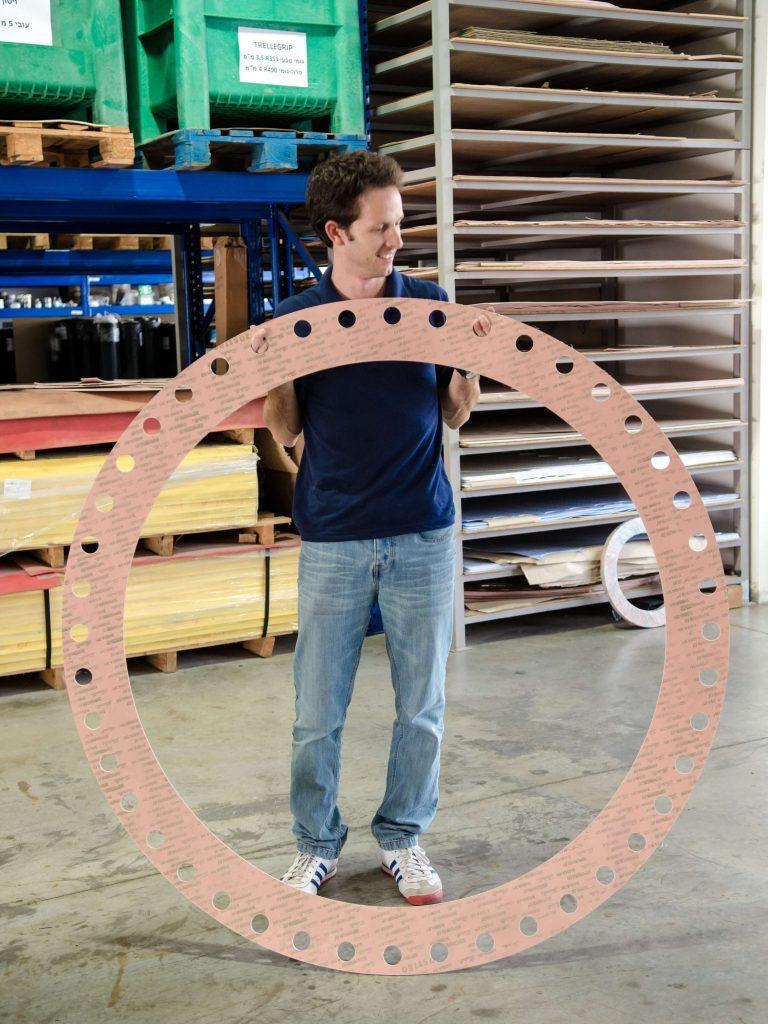
Our facilities operate a wide range of technologies for rubber and plastic manufacturing, that support complex product manufacturing.
Rubber-to-metal compression is very common for the manufacturing of shock absorbers, machine mounts, vehicle engine mounts, connectors and many other products. This method uses high-quality rubber compounds as shock absorbers, in accordance with specific load characteristics.
The rubber compounds used to create shock absorbers are quite unique. Some product areas require high energy absorption capabilities, while other areas necessitate low energy absorption in order to convert mechanical energy into heat for optimal motion control.
In rubber-to-metal compression, the metal serves as a hard and stabilizing structure for the rubber casting, which is soft, flexible and designed for friction.
Supergum operates 40 advanced rubber injection molding machines, including LSR injection molding, which can be used to manufacture products of all sizes – from single mm items to large 1×1 meter products.
Injection molding fits almost all rubber types and rubber hardness levels. Naturally, the process begins with mold development. The mold must adhere to final product specifications and specific manufacturing machine capabilities. It is a task that requires vast engineering knowledge and proficiency.
Injection molding advantages include high production speed, high reproducibility and high-quality finished products. This method is recommended for products that require vast serial manufacturing.
When manufactured in large quantities, the cost per product will be lower than if manufactured via compression, and can balance higher mold development costs.


Supergum has extensive experience and expertise in profile connector manufacturing. Our team has developed a unique method for connecting two or more profiles together, via full rubber vulcanization.
The connection angles can vary (90̇°, 180° or any other angle) and can support any profile shape – as long as the profiles are manufactured from the same material.
Extrusion is a method for creating rubber profiles. Unvulcanized rubber is compressed through an orifice (or a “die”, in professional terms) to create a product that is homogenous in width and can be virtually limitless in length.
To begin the extrusion process, we must first create the die that is tailored to specific product size and shape requirements.
This requires extremely high-level manufacturing expertise.
The extrusion process has many advantages. Die manufacturing costs are relatively low, and so are product production costs. Production speed is also very high. In addition, extrusion allows manufacturers to create products that possess different qualities in specific product areas.
That said, extrusion is not recommended for high-precision products, and is not compatible with all rubber types.

Supergum manufactures gaskets in accordance with all known international standards. Our gaskets are manufactured in custom shapes and sizes, according to client requirements. Our state-of-the-art technology cuts gaskets with maximum precision and optimal cutting quality.
Our advanced digital CNC machine uses a special cutting knife to cut gaskets up to 20mm thickness from rubber materials, gasket sheet materials such as compressed fiber, PTFE, graphite and more. Cutting is implemented after a CAD file of the gasket is uploaded into the machine.
Our water jet cutting machine emits a high-pressure water jet that is ideal for cutting gaskets from a wide variety of materials, including metal, wood, rubber and sponge. The machine operates in accordance with computerized file specifications.
Plastic injection is the most important and common method for plastic product manufacturing.
It is ideal for large-scale serial manufacturing.
Plastic injection has many advantages.
It is quick and relatively cost-effective. It supports high-precision and complex structure production. In addition, plastic can easily be injected onto metal parts. Product painting is often an integral part of the manufacturing process.
The main disadvantage is the cost of the initial plastic injection mold, which can be quite high.




Over the years, Supergum has cultivated its assembly expertise and has become incredibly proficient in manufacturing complex products that incorporate plastic, rubber, electronic and electric elements.
Our assembly lines employ a wide variety of techniques, including welding, wiring and
Application of PSA.
We can also design and construct assembly facilities, which can operate additional assembly lines. All assembly processes are supervised by stringent QA protocols.
Welding is an effective method for fusing together elements made from thermoplastic materials.
In high-frequency welding, two layers are welded together after being exposed to HF waves for a short period of time. After cooling, the two layers become one.
In heat welding, two elements are welded together after exposure to high heat at the precise welding point. Once the elements have cooled, they are inseparable.
Ultrasonic welding uses ultrasonic acoustics to create extreme heat that welds elements together. This method is used to weld hard plastic elements.

